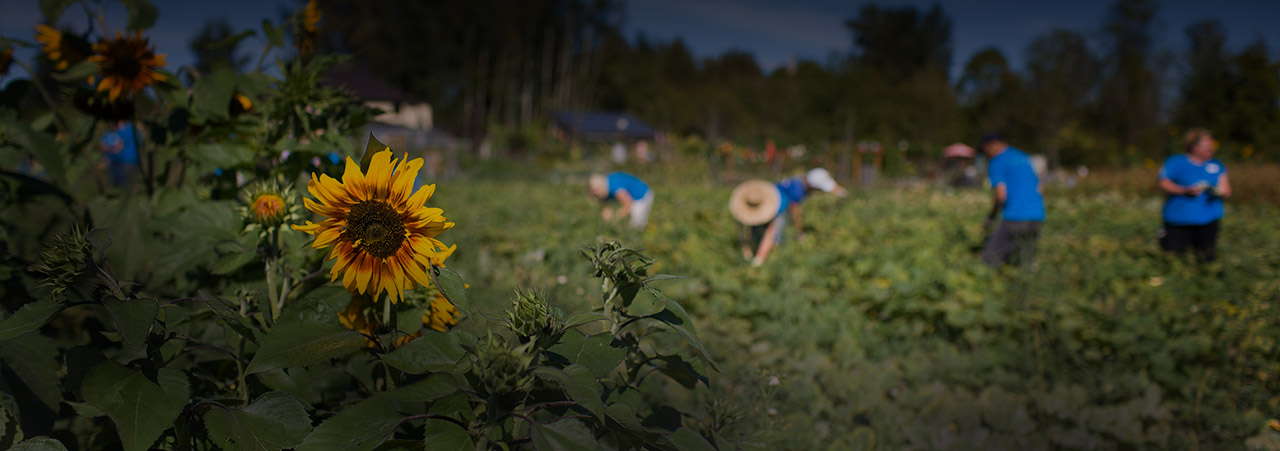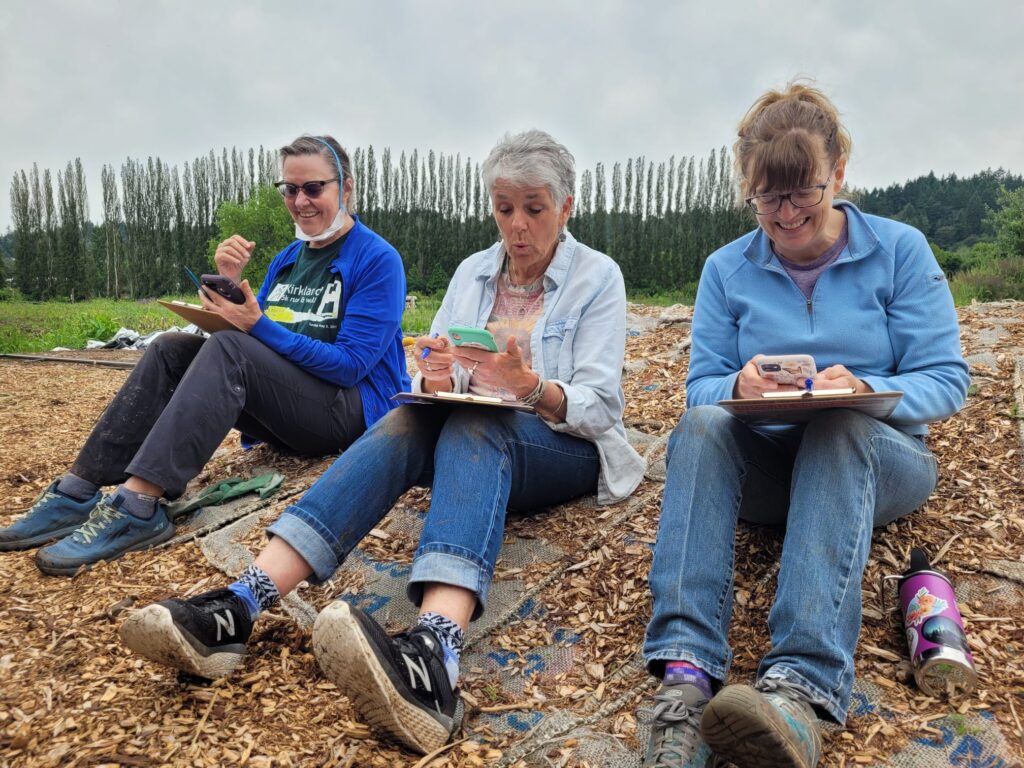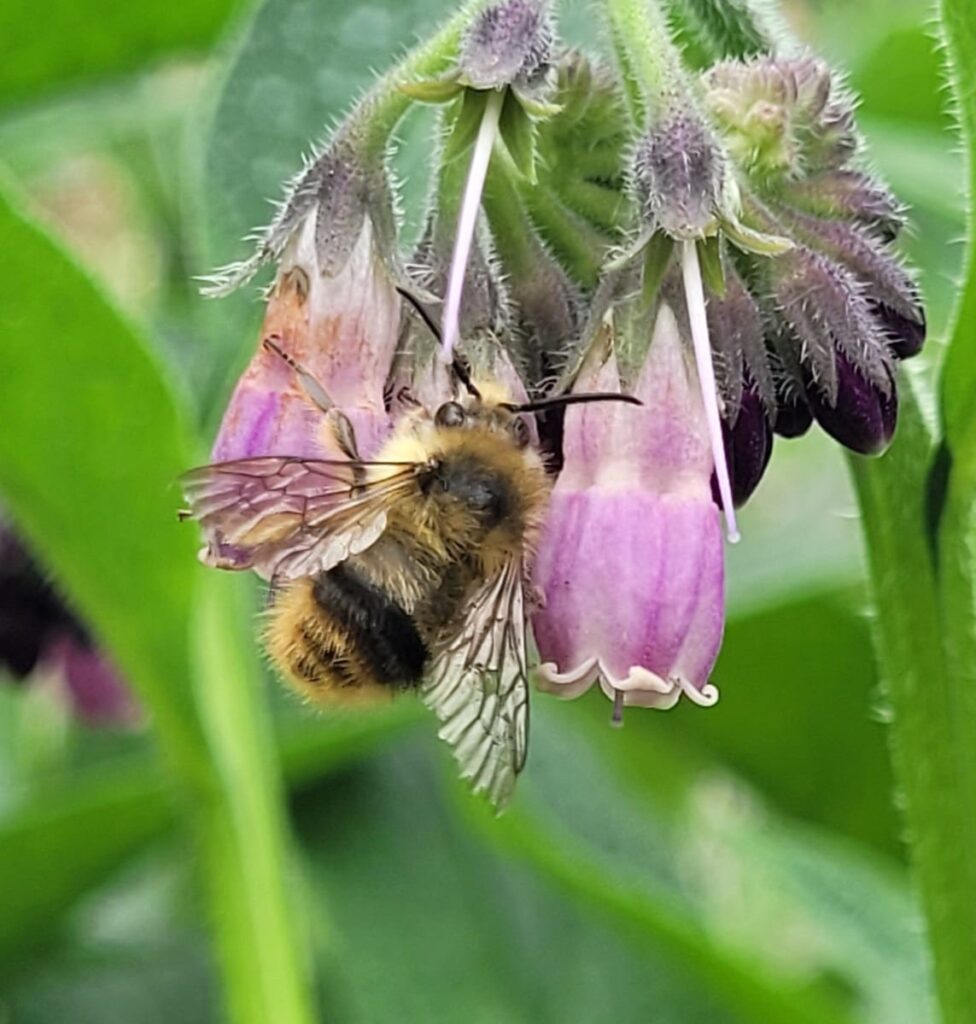Pollinator Count Contributes to Scientific Data on Ecosystem Health
August 19, 2022 - This local group is taking action through citizen science methods of tracking native pollinator health.
continue reading

welcome to the 21 acres blog
"*" indicates required fields

I’m sure many of you have heard a thing or two about the decline in pollinator populations. Pollinators are essential to our food systems. Although the world may seem divided at times, food has the power of connecting us all. Acknowledging this could help us all unite in the fight to save pollinators.
Native pollinators play a vital role in keeping ecosystems and communities functioning. Scientists have seen a significant decline in these populations over time. As environmental advocates, we find it necessary to restore and support native their habitats in every way we can. Fortunately, we have partnered with one dynamic team who is ready to meet the challenge with a solution based, hands-on approach.
That’s why we’re over here counting bees and other pollinators alongside Pollinator Pathway NW. Pollinator Pathways NW (PPNW) is a newly established program supported by invested local organizations with the goal of raising awareness about the importance of cultivating and supporting healthy and abundant native pollinator habitats. This includes native planting, overwintering habitat, defragmentation, and utilizing chemical-free landscaping and gardening practices.
PPNW hopes to encourage communities to learn, embrace, and support the interconnected nature of pollinator populations within ecosystems. They’re currently focused on implementing pollinator-friendly planting projects locally as well as raising pollinator awareness through education. We here at 21 Acres are grateful to be utilizing citizen science through our collaboration with Pollinator Pathways NW and look forward to how pollinator counts will help us assess the work we’re doing here on campus.
Citizen science calls on the general public to aid scientific communities in the collection and analysis of data. The collaboration between citizen scientists and professional scientists empowers communities to gain knowledge when it comes to environmental issues, like pollinator decline. This in turn contributes to the larger goal of remediating these issues.
Professional scientists are often lacking time and resources to gather and analyze large data sets on their own. With the help of citizen scientists, their own research can be better informed and can create a greater influence on environmental projects and policies.
We are no exception. 21 Acres uses citizen science in many aspects of our work and are fortunate to have it be a key component in our pollinator habitat restoration projects. Our recent pollinator count is a great example of this. Performing regular counts will not only provide us with tangible data regarding our habitat restoration efforts on campus, but also contribute to the larger scientific community when it comes to addressing pollinator decline—particularly among lesser-known and native pollinators.
Native pollinators are imperative to the function of ecosystems. Without them, life as we know it would not be possible. According to pollinator.org, between 75-95% of flowering plants rely on pollinators for reproduction. On top of that, the Center for Food Safety reported that just 100 food crop varieties provide 90% of the world’s food and 71 of those require help from pollinators.
Pollination is not only vital for our food systems but also supports clean air, soil, and water. Flowering plants participate in carbon cycling and sequestration, which creates clean and breathable oxygen. Plants are able to take carbon dioxide out of the atmosphere, store it in their tissues, and eventually sequester it in the soil. Studies are showing that native plants are able to store carbon longer, making the mutual relationships between native plants and native pollinators even more important.
These plants also participate in the water cycle: purifying water, preventing soil erosion, and cycling moisture back into the atmosphere. Their roots stabilize soil and allow for water to absorb deeper into the soil where pollutants can be filtered out before returning to our waterways. For these plants to survive and reproduce they rely on pollinators.
When pollination is plentiful, flowering plants can reproduce seeds for dispersal, bear fruit that attract animals who will spread their seeds, preserve genetic diversity, and continue to offer their ecological services. Pollinators are interconnected with all of Earth’s processes and continuously work to sustain balance within the natural world.
Scientists have been observing a decline in pollinator populations since the early- to mid- 20th century, but in the early 2000s the issue gained more attention. Today, pollinator decline is widely discussed amongst scientific communities as well as environmental activist groups.
A few main causes of pollinator decline are human development, the use of pesticides, and an increase in non-native species. Human development has created fragmented habitats that are lacking adequate resources for pollinators. This includes nesting sites, overwintering spots, and foragable food. Part of restoring pollinator habitat involves defragmentation, which reconnects fragmented habitats. Studies are showing that fragmentation not only lowers population size but species diversity as well. Pollinators thrive having interconnected habitats where they can build complex, mutualistic networks with their plant counterparts. There are generalist species, who are not picky when it comes to the plants they visit. Then there are specialist species, who have developed relationships with one or two plants exclusively. Specialists are more sensitive and unable to replace mutualistic partners like generalists can, lowering the overall diversity among populations.
Toxic chemicals are a concern within many aspects of life but especially for pollinators. Pesticides are proven to be directly toxic. When these chemicals are used in farming, landscaping, and gardening, it poses a huge threat for these populations. If sprayed directly on them, they’ll die instantly. Coming into contact with contaminated pollen grains causes them to become disoriented and they struggle to navigate, sometimes not making it back to the hive. However, if they do make it back, they risk exposing the entire hive which can result in mass death.
When considering the effect non-native species have on pollinator communities, we’ll look at both the plant and animal kingdoms. Native plants tend to be more nutritious and oftentimes form mutualistic relationships with specific pollinator species. However, if non-native plants are invasive and outcompeting natives, pollinators may be drawn away from the more nutritious option. If they’re a specialist relying on a specific plant species, they might even be forced to try relocating.
Non-native pollinators generate some competition with native species when it comes to finding pollen and nectar, especially when adequate habitats and resources are already dwindling. Something to mention is that the honeybee is actually non-native to the Pacific Northwest. As much as we can appreciate them for their ecosystem services, keep in mind that it’s equally important to be creating and sustaining healthy habitats for native pollinators.
That’s where Pollinator Pathways NW comes in.

The first pollinator count at 21 Acres took place in the afternoon on June 15th. It was cloudy with a slight breeze, which aren’t the most optimal conditions. Pollinators are more abundant on sunny, calm days. However, we’re grateful it didn’t rain.
So, what’s involved in a pollinator count? No, we didn’t go around pointing out every single bumblebee that twitched. Here’s how we did it.
Staff members of 21 Acres along with members from Pollinator Pathways NW utilized an app called iNaturalist to identify and record observations. Each person went to a different site on campus where they chose one flower or quadrant of flowers to observe for ten minutes.
We took pictures of any visiting pollinators and recorded any important notes. After the ten minutes of observations, we uploaded our pollinator snapshots to iNaturalist where we were able to identify the species, thanks to thousands of photos submitted by citizen scientists like us.
This data will contribute to the larger 21 Acres data set that will be used in years to follow by staff and hopefully the larger scientific community. This event can be viewed as our baseline data collection. We will be able to build on this data as we continue to perform pollinator counts throughout the years to come. Comparing data sets year to year is going to provide crucial information and guidance regarding the pollinator habitat restoration projects such as pollinator species, pollinator health, and the success of our native plantings.
We want to give a huge thank you to Pollinator Pathways NW for all of their efforts here on the 21 Acres campus and beyond! Their dedication to pollinators will provide necessary support to surrounding agricultural production districts by ensuring that pollination is plentiful. We look forward to working on future projects together and seeing what else we’re all able to accomplish when it comes to supporting native pollinator populations.
After reading this you may now be asking yourself, “What can I do to support native pollinator habitats?” Here are a few ideas:
• Incorporate pollinator-friendly plants into your landscaping and gardens
• Utilize toxin-free practices when landscaping and gardening
• Organize a pollinator count of your own using iNaturalist
• Volunteer with local organizations or groups that focus on pollinator populations
About Katherine Cole
Katherine is a member of the 21 Acres soil team, working in landscape and restoration. She was born and raised here in western Washington and dearly loves the Pacific Northwest. She enjoys connecting with the natural world, whether that be through scientific research, artistic expression, or simply enjoying moments outdoors. Katherine graduated from the University of Washington with a B.A. in Environmental Studies. With her position here at 21 Acres she’s excited to become more familiar with native plants, animals, and fungi as well as their interconnected roles in creating ecological soundness. Katherine believes the work being done through 21 Acres community is a beautiful representation of the climate action she hopes to see ripple through society.

